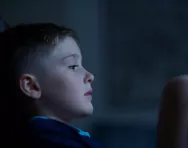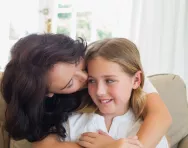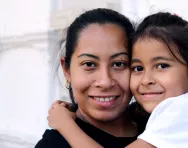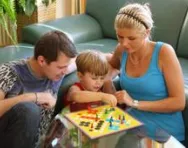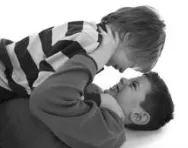Important update from TheSchoolRun
For the past 13 years, TheSchoolRun has been run by a small team of mums working from home, dedicated to providing quality educational resources to primary school parents. Unfortunately, rising supplier costs and falling revenue have made it impossible for us to continue operating, and we’ve had to make the difficult decision to close. The good news: We’ve arranged for another educational provider to take over many of our resources. These will be hosted on a new portal, where the content will be updated and expanded to support your child’s learning.
What this means for subscribers:
- Your subscription is still active, and for now, you can keep using the website as normal — just log in with your usual details to access all our articles and resources*.
- In a few months, all resources will move to the new portal. You’ll continue to have access there until your subscription ends. We’ll send you full details nearer the time.
- As a thank you for your support, we’ll also be sending you 16 primary school eBooks (worth £108.84) to download and keep.
A few changes to be aware of:
- The Learning Journey weekly email has ended, but your child’s plan will still be updated on your dashboard each Monday. Just log in to see the recommended worksheets.
- The 11+ weekly emails have now ended. We sent you all the remaining emails in the series at the end of March — please check your inbox (and spam folder) if you haven’t seen them. You can also follow the full programme here: 11+ Learning Journey.
If you have any questions, please contact us at [email protected]. Thank you for being part of our journey it’s been a privilege to support your family’s learning.
*If you need to reset your password, it will still work as usual. Please check your spam folder if the reset email doesn’t appear in your inbox.
What is CAMHS?
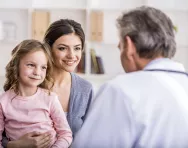
It’s no secret that mental health problems are on the rise amongst young people. A quarter of parents say that exam stress has taken its toll on their children’s mental wellbeing, and half of all long-term mental illnesses first emerge before a person turns 14.
For many children with mental health difficulties, a referral to CAMHS – Child and Adolescent Mental Health Services – is the first step towards getting help.
What is CAMHS?
CAMHS are specialist NHS mental health services for children and young people. They offer assessment, diagnosis, treatment and support for young people who are experiencing problems with their emotions, behaviour or mental health.
‘CAMHS teams are made up of a number of different professionals, all of whom have slightly different roles,’ explains Emma Saddleton, Parents Helpline manager at YoungMinds (0808 802 5544). ‘Parents often think their child is being seen by just one of these people, but actually, all of them are involved in multi-disciplinary team (MDT) meetings where the case is discussed.’


Boost Your Child's English & Maths!
- Weekly programme for each school year
- Weekly resources delivered to your dashboard
- Keeps your child's learning on track
CAMHS professionals include:
Psychologists: help children and their families explore how the difficulties they’re facing affect their emotions, behaviour and thinking.
Psychotherapists: work with children and families to look at what might be causing their difficulties, for example, their early experiences.
Psychiatrists: medically qualified doctors who can diagnose and prescribe medication for a range of mental illnesses.
Family therapists: give children and families a safe space to talk about their difficulties together.
Clinical social workers: help support families who are referred to CAMHS. ‘Seeing a clinical social worker through CAMHS doesn’t mean you’ve been referred to social services, and shouldn’t ring alarm bells,’ adds Emma.
Nurses: care for and support young people, and may prescribe certain medications.
‘The crucial difference between CAMHS and adult mental health services is that CAMHS has a holistic, family focused approach,’ Emma explains. ‘They will never treat a child in isolation, without involving the parents and possibly other members of the family, and they all consult together as a team of professionals to come up with an individual plan.’
What can CAMHS help with?
Children can be referred to CAMHS with a whole range of emotional, behavioural and mental health difficulties that are affecting their own wellbeing, family life, school or the wider world. These include:
- Violence and aggression
- Depression
- Eating difficulties and disorders
- Anxiety and phobias
- Self-esteem problems
- Difficulties arising from trauma
- Obsessions and compulsions
- Relationship problems
- Sleep problems
- Self-harm
- Suicidal thinking
In some areas, autism spectrum disorders (ASD) and attention deficit hyperactivity disorders (ADHD) also fall with the remit of CAMHS, but in others, children will be seen by a paediatrician.
‘My daughter was referred to CAMHS by her school after I suffered complications from surgery,’ says Anna, mum to Eleanor, 10. ‘They were concerned about the high levels of anxiety she was showing. She also suffers from juvenile arthritis and was experiencing a needle phobia which affected her treatment, and showing signs of ADHD.’
Seeking a CAMHS referral
The most common way to seek a referral to CAMHS is via your GP. ‘Bear in mind that you won’t get a referral based purely on what you as a parent say,’ Emma advises. ‘Your GP has to see your child in person, so you could either book a double appointment, and see the GP first by yourself and then bring your child in from the waiting room, or book a single appointment on your own first, and then take your child at a later date.’
Emma suggests writing a bullet-pointed list explaining exactly what your child’s issues are and the impact they are having. Try to include:
- Your child’s symptoms and behaviour
- Timeframes: when they first started, and if/when they escalated
- Any triggers you can identify
- The impact the difficulties are having on your child, the rest of the family, their school life, etc
- The outcome you are hoping for; be very specific, for example, ‘I would like my child to be referred to CAMHS and I would like you to come back to me within seven days to let me know how long a wait we can expect.’
‘Try to be as clear as possible, as you only have a short amount of time with your GP,’ Emma says. ‘If you know you’re likely to need extra time, book a double appointment.
Anna also advises being up front about the issues you’re experiencing. ‘Be honest, and don’t be afraid to ask for help,’ she says. ‘Talk to your child’s teacher and see if they’ve noticed anything, but don’t be surprised if they haven’t, as school is a totally different environment to home. Trust your instincts and be open about how bad things are.’
‘It’s also a good idea to ask the GP to fax a copy of your notes to CAMHS along with the referral letter,’ Emma adds. ‘The information they receive will determine whether your child is seen, and in what timeframe, so it’s vital that they have as much detail as possible.’
Children may also be referred to CAMHS by their school, school nurse, a social worker or a health visitor.
What happens next?
If your child is referred to CAMHS, there will be some form of assessment to see how they can best be helped. ‘This may be a single appointment, or a series of meetings over a longer period,’ explains Emma.
You may be seen by one of the professionals listed above, or several. They might want to see you alone, with your child, or your child on their own. ‘Parents often feel very anxious if a professional asks to see the child alone, but this can be a vital part of the assessment process,’ Emma adds.
Before your appointment, it’s helpful to make a list of your child’s difficulties, and also any questions you might like to ask, such as:
- What the assessment process will be
- How long it will take
- Who will be involved
- What possible diagnoses they are looking at
- What the treatment might be
Be prepared not to get instant answers. ‘It’s normal to feel frustrated if you don’t come away from the first appointment with a diagnosis and a treatment plan, but the assessment period usually involves observation, monitoring and risk assessments, which could include school visits,’ Emma says. ‘That said, it’s important to ask questions, including what the next step will be.’
Once the assessment process has been completed, CAMHS will notify you of their findings. They might have identified factors that are affecting your child’s mental health, or made a firm diagnosis such as autism or an anxiety disorder.
They will also tell you what they propose to do next. This could include medication, family therapy, counselling, cognitive behavioural therapy (CBT), or a referral to the Child Development Centre, among other possibilities. If they are unable to help your child within CAMHS, they should signpost other places where you might be able to get support.
Anna’s daughter, Eleanor, was eventually diagnosed with ADHD as well as anxiety issues. ‘Once her ADHD was under control with medication, the psychologist was able to start addressing her anxiety,’ Anna explains. ‘We still see the psychologist and psychiatrist on a regular basis, and are nowhere near done with helping her, but we’ve seen a huge difference in her behaviour since she’s been on medication.’
Meanwhile, Karen’s daughter Georgia, 11, was referred to CAMHS with anxiety and autistic traits. ‘She was initially seen by one of their practitioners then assigned a keyworker who saw her weekly for almost a year to work on her anxiety,’ Karen says. ‘She has also just been referred for weekly appointments to help her manage her anger.’
When your child doesn’t get the help they need
CAMHS is an under-resourced and very busy service. ‘There isn’t a universal set of criteria or a single threshold for referral,’ Emma explains. In some areas, children may be referred with fairly recent or relatively minor problems; in others, the service is so stretched that only children who are self-harming or showing serious signs of suicidal thinking are referred. Waiting lists will also vary, and it’s not a matter of first come, first served: the young people who are deemed to be most at risk will top the list.
‘What’s important is that parents are not deterred,’ Emma says. ‘No one should have to wait till they’re at crisis point to get help. Prevention is always better than cure, so if you feel your child needs help, go back to your GP and push for further intervention.’
‘I’d advise that if you don’t get the support you need, ask again and again, until you’re listened to,’ agrees Karen. ‘Also, speak to local charities for support regarding what your child might be entitled to.’
There are a number of charities and support groups that can help, including the YoungMinds helpline, ChildLine, Kooth.com and Bullying UK, as well as many private counselling services for children, young people and families. You can find a counsellor through organisations such as the British Association for Counselling and Psychotherapy and the Association of Child Psychotherapists.
